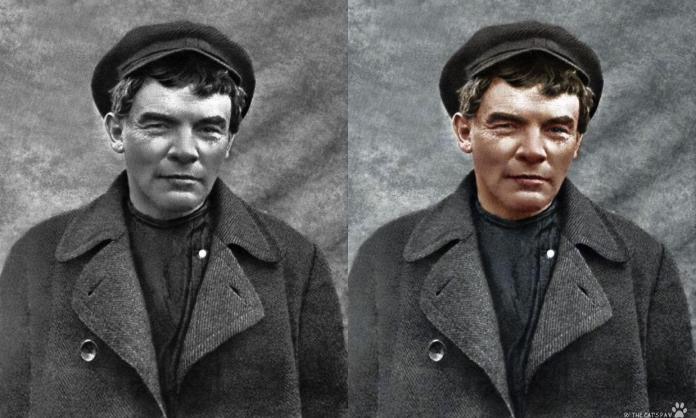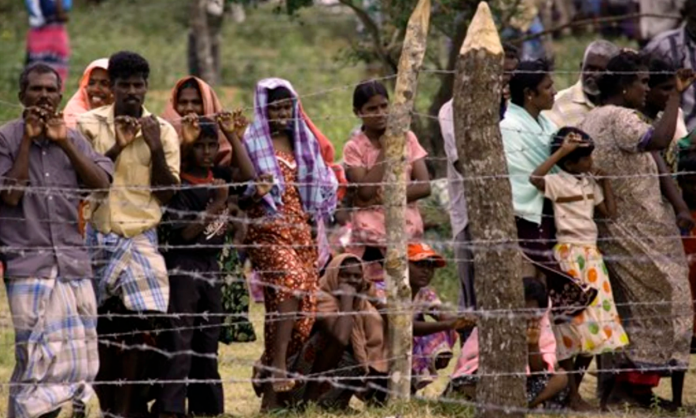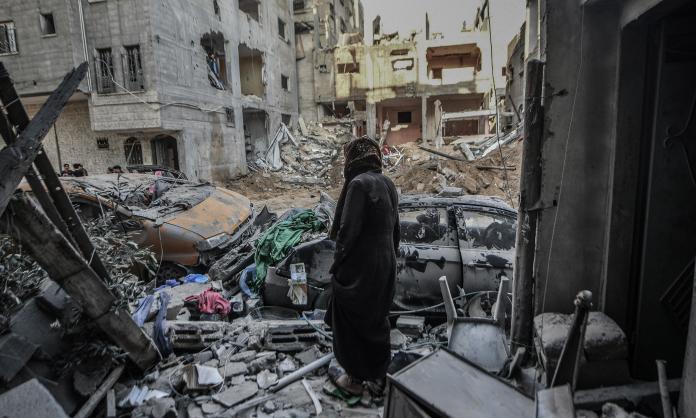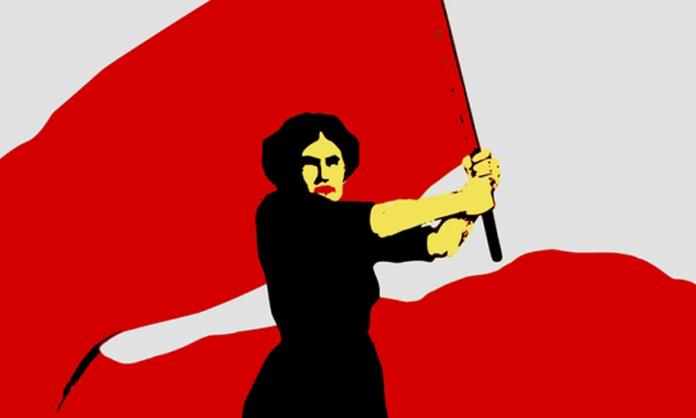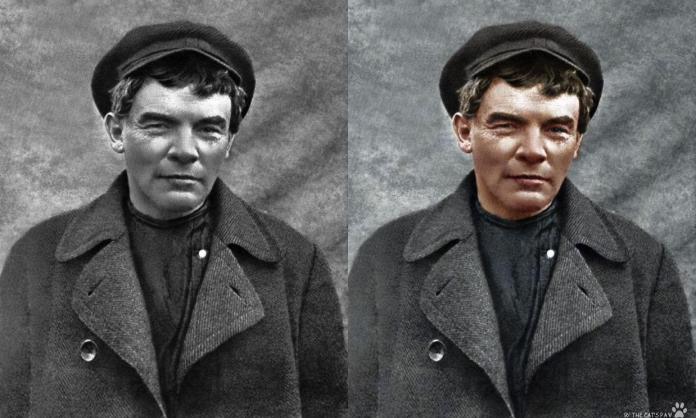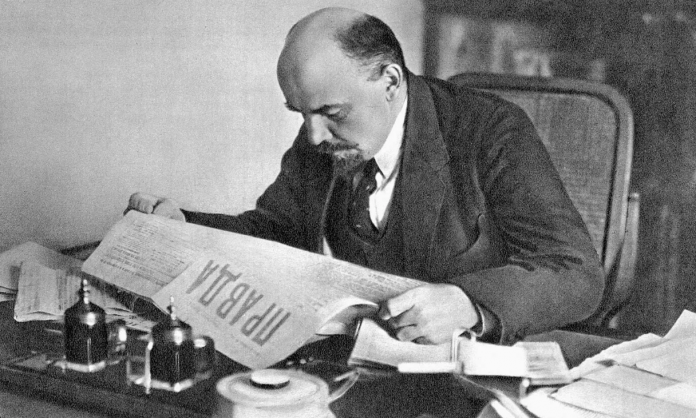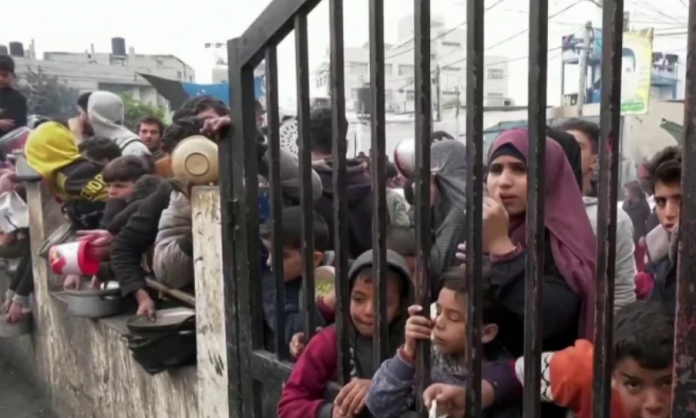Vladimir Lenin, leader of the Russian Revolution, died a century ago, at the age of 53. He made few general statements of theory and left behind almost no self-regarding autobiographical statements. Yet almost immediately after his death, Lenin was made the central figure of a personality cult, as Russian government bureaucrats codified and promoted throughout the world socialist movement an increasingly deranged and tyrannical set of precepts. We got just 53 years of Lenin, but we’ve had a century of “Leninist” ideas that bear little relation to his actual thought and practice.
Yet the Bolshevik leader’s life and work, once recovered from these distortions, are the keys to understanding many of the crises we face today.
Even before his death, in the period when he was badly sickened from strokes but still capable of political work, Lenin fought against the conversion of his life’s revolutionary work into what would become “Leninism”. Though sick, he remained the leading figure of Russia’s revolutionary government. Years of civil war and international economic blockade disintegrated the workers’ movement, which had made the revolution. Russia’s cities were depopulated, socialist activists were dispersed throughout the country, democratic life was made almost an impossibility. But the war had been won, leaving intact a bureaucratic system that now substituted itself for the dead or dispersed workers.
Heroic attempts had been made to spread the revolution internationally—not by conspiracies or coups, but by educating working-class militants in socialist strategy. In this, Lenin and his government followed Marx and Engels’ conclusions about whether an economically primitive Russia could contribute to international socialist revolution.
“If the Russian Revolution becomes the signal for a working-class revolution in the West, so that both complement each other, the present Russian common ownership of land may serve as the starting point for a communist development”, they had written in 1882. But by late 1923, the Western revolutions were in retreat. Capitalists inside and outside Russia, ferociously anti-communist foreign governments and even the post-revolutionary Russian bureaucracy itself wiped out the remaining revolutionary impulse, converting Russia into just one more capitalist state.
In Lenin’s last months, he watched the nightmare eventuate. As documented by Moshe Lewin in Lenin’s Last Struggle, sections of the state bureaucracy began subordinating the Russian economy to the world capitalist system as soon as Lenin became ill. They relaxed state controls on foreign trade while reinstating the old tsarist Russian high-handedness towards national minorities.
In light of later Stalinist crimes, the level of bureaucratic conspiracy, nationalism and deal-making with foreign capitalists seems almost benign. But Lenin recognised the danger. Russia’s government was undergoing a profound and disturbing transformation and was departing from the ideals that had inspired the revolution. Despite his intense fear that a split in the government would lead to a new civil war, Lenin declared his intention to wage a factional battle against the bureaucracy. This was practically the last political decision he was able to make before he died.
The speed with which the bureaucracy converted Russia’s government into a dictatorship might seem shocking. But it confirms the core of Lenin’s politics, and of Marxist theory: socialism is impossible without international working-class revolution. No national bureaucracy, regardless of its history and personnel, can organise society on socialist principles.
By late 1938, almost all of Lenin’s closest collaborators had been exterminated by the Stalinist machine—even those, like Zinoviev and Kamenev, who had collaborated with it. Trotsky, the revolution’s second most prominent leader, was assassinated in 1940. The victims of Stalin’s onslaught were slandered as Nazi agents—or, during the period of his peace treaty with Hitler, as agents of US imperialism. In 1944, Hitler commented that the procedures in Stalin’s show-trials were a model for Nazi courtrooms.
The Russian economy was redirected towards military production, with a heavy dose of slave labour. The terror was enforced at every level of society: Russian workers who resisted political and economic repression were sacked, blacklisted and imprisoned as “Trotskyists”. As David King has documented, workers in this period, terrified of being caught in the purges, went through their history books and ripped out or burned photos of once-prominent revolutionary leaders, as if they were living under a fascist dictatorship.
In the cultural sphere, “Leninism” in the 1930s and 1940s meant hero-worship of Stalin, who was literally repainted (in official murals and artworks) as Lenin’s anointed successor—the inheritor of a political dynasty rather than part of a revolutionary movement. Economically, it meant the forced industrialisation of Russia’s economy. In the field of international politics, it meant treaties and alliances with imperialist powers—including Hitler’s Germany, for a period—and the destruction of revolutionary workers’ movements that challenged the Russian bureaucracy’s grip on power: Stalin’s agents “liquidated” the leaders of the workers’ revolution in Spain, easing the path for Franco’s fascists to take power.
In this period, Communists everywhere read state-sanctioned texts from the Russian government on the “Foundations of Leninism”. Yet Lenin’s own practice of international politics was the opposite of the nationalist wheeling and dealing that Stalin’s henchmen carried out.
From 1918 until his illness in 1923, the focus for Lenin’s international policy was the Communist International: a gathering and alliance of revolutionary socialist parties, in which tactics and strategy could be discussed. “Destruction of state power is the aim set by all Socialists”, read the theses on democracy adopted by the first gathering in 1919. It further specified: “By enlisting the mass organisations of the working people in constant and unfailing participation in the administration of the state, it immediately begins to prepare the complete withering away of any state”.
But, as Lenin wrote to European and American workers in 1918, there was a problem: “We are in a besieged fortress so long as the other armies of the world socialist revolution do not come to our aid”. Socialism in Russia depended on workers’ revolution outside Russia, and both of these required open, democratic debate and argument throughout the workers’ movement.
Lenin’s internationalism was based on working-class cooperation, across state borders, to overthrow the capitalist system. The congresses of the Communist International remain invaluable records of the high point of worldwide socialist strategic debate. Stalin’s “Leninist” regime wound the institution up in 1943—a signal to Western powers that international revolution was not of interest to his government.
In the 1950s, official “Leninism” appeared to have stabilised. Stalin’s Russia had spread its system through Eastern Europe, not by workers’ revolution, but by military conquest. The Soviet bureaucracy was joined by China’s new government, which admired Russia’s rapid industrialisation under Stalin. “Leninist” parties outside Russia argued that the duty of socialists was to support Russian foreign policy, embrace nationalist alliances and renounce workers’ revolution, the promotion of which was labelled “Trotskyism”.
But the history of Lenin’s revolutionary career provided reasons for hope. In 1914, at the outbreak of the First World War, the socialist movement had similarly collapsed into nationalist chauvinism, statism and a distortion of Marxism. Socialist parties across Europe supported the imperialist aims of their local capitalist states in the First World War. Yet a minority of activists held true to the internationalist vision of socialism, facing exile, jail or worse. Lenin was one of them.
More than passively maintaining old principles, Lenin argued that the crisis of world imperialism could create conditions for an international workers’ revolution, as the exploited in every country experienced repression and violence from their own governments. The rivalry between great powers had, in 1914, broken into open war. At that point, Lenin argued, socialists had the duty to “promote every effort at revolutionary mass struggle against imperialism, for socialism, and to work to transform the imperialist war into a civil war for socialism”.
What was needed was a clear organisational and political split: revolutionary socialists had to break from those who supported imperialism and nationalism. This approach ultimately led to the workers’ successful seizure of power in Russia in 1917.
Imperialist rivalries and the distortions of socialism led to international revolt once again from the 1950s. The Stalinist regimes in China and Russia turned, denouncing each other as fascists. Socialist workers rose against Stalinism in Germany, Hungary and Czechoslovakia, while revolutionary movements in the West challenged their own imperialist governments: US soldiers mutinied in solidarity with their “enemies” in Vietnam, the Black struggle against racism developed a revolutionary socialist current, student protests and workers’ strikes proliferated, and a new generation of activists sought to sidestep the sclerotic, conservative “Leninism” promoted by pro-Russian Communist parties and rediscover and authentic revolutionary internationalist tradition.
But this time, something was missing. Lenin had combined a commitment to political organisation with a crystal-clear vision of socialism based on workers’ power and participation. Many revolutionaries of the 1960s and 1970s, not wanting to reconstruct Stalin-style parties, rejected political organisation altogether. Others, unable to completely eradicate the influence of Stalinist bureaucratic politics, embraced political organisation, but rejected the focus on democratic worker’s power that was central to Lenin’s strategy for revolution.
The revolts of the 1960s and 1970s exposed and, in many cases, mortally wound Stalinist “Leninism”. But the absence of a force that upheld Lenin’s strategy meant that the movements themselves largely disintegrated into confusion and disappointment.
It’s no surprise, then, that the 1980s and 1990s were an apparently triumphant period for pro-capitalist politics. The Stalinist parties had been discredited and weakened by the social movements of the 1960s and 1970s. But no significant socialist alternative had emerged to replace them. The great Stalinist powers, Russia and China, began to implement market “reforms”. Faddish theories proliferated: the working class was allegedly dead, and so was the class struggle and socialism. The peaceful triumph of the free market was apparently assured for the foreseeable future. Lenin’s project was, in the eyes of many, dead.
In the period of “peace” from 1907 to 1913, when Russia’s revolutionaries were hunted, jailed, exiled and hanged by a rampaging tsarist bureaucracy, many were tempted to abandon Marxism and the struggle for socialism. The revolution of 1905 had been defeated: “The Tsarist autocracy has been restored, the feudal lords are reigning and ruling again, the workers and peasants are everywhere being crushed down again”, wrote Lenin in 1908.
It was, he wrote in the same year, a time of “rampant reaction, of betrayals and despondency in the camp of the democrats, of crisis and partial break-down in the [Marxist] organisations”. Rather than abandoning Marxist principles and embracing the mystical or conservative fads that swept the socialist movement at the time, Lenin and his allies in this period continued the difficult and dangerous task of underground organising.
Just as the stability of the 1980s and 1990s collapsed into the current period of war and economic crisis, the “peaceful” period before World War One transitioned suddenly and sharply into worldwide upheaval—and the organisation built by Lenin was able to turn this into a workers’ revolution.
His experience in 1905, when workers’ strikes developed into revolutionary councils—the world’s first “soviets”, identified by Lenin as the “the embryo of a provisional revolutionary government” because of their ability to gather together the oppressed under the leadership of urban workers—provided the basic vision for the organisation he continued to build.
“To lead the political struggle, both the Soviet ... and the Party are, to an equal degree, absolutely necessary”, he wrote in 1905. This strategic vision was the basis for his continued organising in the hard periods, when immediate revolution was off the agenda.
Since the 2010s, wars, revolutions, and the obvious failings of the capitalist system have returned to the centre of global politics. To turn the disasters of our time into a socialist future, Lenin’s politics–internationalism, workers’ power, and the building of revolutionary socialist politics–remain the only solution.




